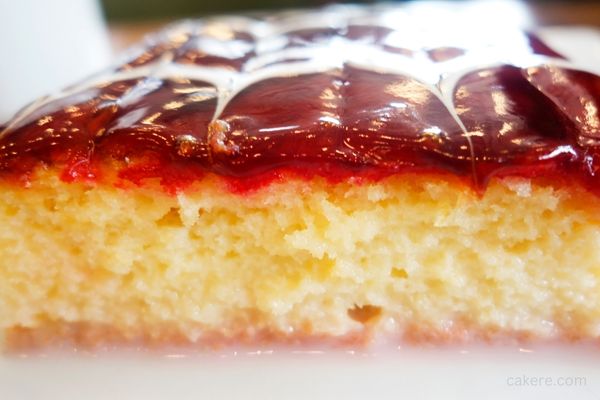Milk cake, a popular sweet delicacy, is a traditional dessert enjoyed by many. Its rich and creamy texture combined with a unique flavor makes it a delightful treat for special occasions. However, when it comes to weight loss, the question arises: Is milk cake good for achieving your fitness goals?

Understanding Milk Cake
Milk cake, also known as kalakand or milk fudge, is a sweet dish made from solidified milk and sugar. It has its origins in Indian cuisine and is often prepared by condensing milk until it reaches a thick consistency.
The process involves simmering milk for an extended period to reduce its moisture content, resulting in a dense, sweet dessert. Milk cake holds cultural significance and is commonly enjoyed during festivals and celebrations.
Nutritional Profile of Milk Cake
When considering the suitability of milk cake for weight loss, it is essential to examine its nutritional composition. Milk cake is primarily made from milk, sugar, and sometimes additional flavorings like cardamom or saffron.
In terms of calories and macronutrients, milk cake is relatively high. A typical serving of milk cake (100 grams) contains around 320-350 calories.
The majority of these calories come from carbohydrates and fats, with smaller contributions from protein. It’s worth noting that the exact nutritional values can vary based on the specific recipe and preparation method.
Milk cake also provides several essential micronutrients. It contains calcium, which supports bone health, and small
amounts of vitamins such as vitamin A and vitamin D. However, it is important to note that milk cake is not a significant source of these nutrients compared to other healthier food choices.
Impact of Milk Cake on Weight Loss
When it comes to weight loss, milk cake may not be the best option. Its high-calorie content can make it challenging to fit into a calorie-restricted diet. A single serving of milk cake can contribute a significant number of calories, potentially hindering your weight loss efforts.
Additionally, milk cake often contains added sugar and fat. The sugar content can lead to spikes in blood sugar levels, which may contribute to cravings and a higher calorie intake. The fat content, although providing richness and flavor, can contribute to overall calorie consumption and may not align with weight loss goals.
Moderation is Key
While milk cake may not be the most weight-loss-friendly dessert, enjoying it occasionally and in moderation can still be a part of a balanced approach.
Portion control is crucial when consuming milk cake. Instead of indulging in large servings, opt for smaller portions to satisfy your sweet tooth without derailing your progress.
Furthermore, the frequency of consumption should be taken into account. It’s best to reserve milk cake for special occasions or as an occasional treat rather than incorporating it into your daily routine.
By treating it as an occasional indulgence, you can still enjoy the flavors of milk cake without compromising your weight loss goals.
Alternatives to Milk Cake for Weight Loss
If you’re looking for healthier alternatives to milk cake while aiming for weight loss, several options can satisfy your dessert cravings without packing on excessive calories.
Fresh fruits are an excellent choice. They provide natural sweetness, essential vitamins, minerals, and dietary fiber. Incorporating a variety of fruits into your diet can offer a refreshing and nutritious alternative to high-calorie desserts like milk cake.
Greek yogurt is another option worth considering. It is rich in protein, which can help keep you feeling full for longer periods. Greek yogurt also contains probiotics that support gut health. Pair it with some fresh fruits or a sprinkle of nuts for added flavor and texture.
Nuts and seeds can be a nutritious addition to your diet. They provide healthy fats, protein, and fiber, which contribute to satiety. Enjoy a handful of almonds, walnuts, or pumpkin seeds as a snack or incorporate them into your favorite recipes to add a crunchy element.
Incorporating Milk Cake Wisely
If you choose to include milk cake in your weight loss journey, it’s important to do so wisely. Remember that weight loss is not solely determined by a single food or dessert but rather by the overall balance of your diet and lifestyle.
A balanced approach is key. Focus on consuming a variety of nutrient-dense foods, including lean proteins, whole grains, fruits, vegetables, and healthy fats. Incorporate regular physical activity or exercise to burn calories and support your weight loss efforts.
FAQs
While milk cake is high in calories and added sugar, it can be enjoyed occasionally in moderation as part of a balanced diet while trying to lose weight. It’s important to practice portion control and limit the frequency of consumption.
A typical serving of milk cake (100 grams) contains around 320-350 calories. However, the calorie content can vary depending on the specific recipe and preparation method.
Milk cake is made from condensed milk, which contains lactose. Therefore, individuals with lactose intolerance may experience discomfort or digestive issues if they consume milk cake. It’s advisable to choose lactose-free or dairy-free alternatives.
Yes, there are several healthier dessert options that you can consider while trying to lose weight. Fresh fruits, Greek yogurt, and nuts/seeds are nutritious alternatives that provide flavor and satisfaction without the high calorie and sugar content of milk cake.
When consuming milk cake, it’s recommended to practice portion control. Opt for smaller servings to limit calorie intake and be mindful of your overall calorie goals for weight loss.
Conclusion
While milk cake may not be the most suitable dessert for weight loss due to its high-calorie content and added sugar, it can still be enjoyed in moderation as part of a balanced diet.
Remember to practice portion control, limit its frequency of consumption, and explore healthier dessert alternatives such as fresh fruits, Greek yogurt, and nuts and seeds.
